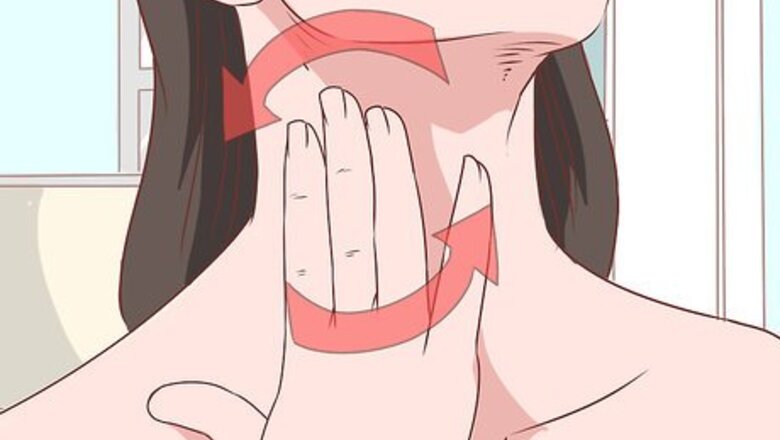
views
Treating Stress Balls at Home
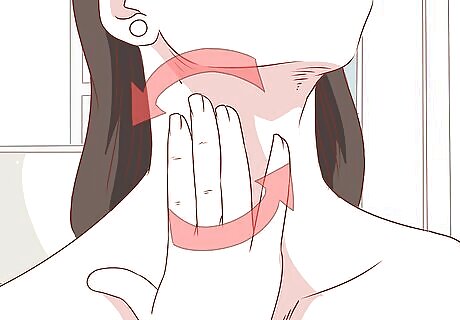
Try self-massage. The simplest method to try is rubbing your own neck. Massage the tense spot to relax the stressed muscles by gently kneading the sore area. Begin by applying gentle pressure to the ball. Use the tips of your fingers to rub the stress ball using a tight circular motion. Repeat this motion for a minute or two to see if it provides any relief. You may also simply rub back and forth. If the massage feels painful, you're probably rubbing too hard. Start with a gentle touch, increasing pressure as needed. If this method helps, massage the area from one to five times a day. Each session should last for approximately five minutes, as you do not want to overdo it. You want to avoid putting extra stress on your muscles.
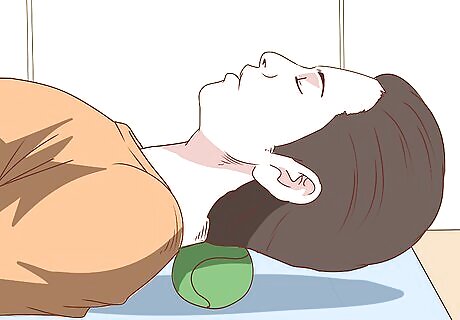
Use tools. Although many people find relief just by massaging the stress ball with their fingers, it's important to play around with different massage techniques to find what works for you. Many people find using a basic tennis ball to be beneficial. To use the tennis ball technique, lie down on the floor and place the tennis ball beneath your neck, at the approximate location of the stress ball. You can also do this leaning against a wall. Adjust your body positioning until you feel a "good" pressure at the location of the knot. The tennis ball should not cause pain. Move your neck and body up and down and from side to side, allowing the tennis ball to roll over the stress knot. This helps to release tension from the muscle and loosen the knot. Make sure that your neck is a natural neutral position when using a tennis ball. If you find that your head is hanging down on the ball (which may further stress your muscles), simply place a small book on the floor and the ball on top of that. This brings the ball up to your neck instead of your neck arching or extending to reach the ball on the ground. If you find that a tennis ball is too soft, you can progress to a lacrosse ball, which is more firm and may be more beneficial to those with chronic stress balls or more muscle mass Many stores also sell self-massage tools, such as wooden rollers or foam rollers. These can be used in the same manner as the tennis ball.

Treat with heat. Heat has been shown to relax tense muscles. At home, you can use a heating pad to increase blood flow to the stressed muscles. When your muscle has been tight for an extended period of time, it begins to lose blood flow. This causes further stress and pain. Applying heat will relax the muscle and relieve pain by increasing blood flow to the area. Hold the heating pad against the stress ball in your neck for a few minutes, twice per day. If you do not own a heating pad, soak a clean towel in hot water, wring it out and use it as a hot compress. Take regular hot baths. Hot baths can be beneficial for relieving stress balls in the neck, for the same reason as hot compresses. Give yourself neck support by placing a towel or bath pillow at the edge of the tub. This will help you avoid causing additional stress to your neck. Adding Epsom salts to the water will make your bath even more beneficial. Epsom salts are used to relieve muscle pain and reduce inflammation. For best results, dissolve one to two cups of Epsom salts in your bath before you hop in.
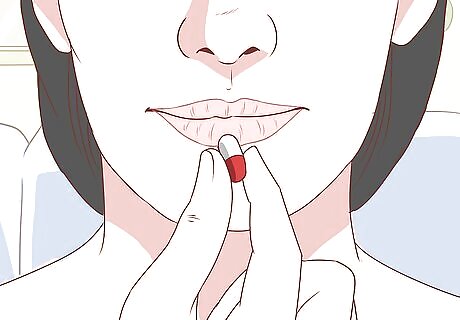
Use pain relievers. Head to your local drug store to look at over-the-counter muscle relaxers. You can find creams, gels, and solid "sticks" (like deodorant) that can help ease your tension. Make sure to ask your pharmacist if she can recommend a product. Be sure to carefully read the instructions and dosage directions before applying any products to your skin. Over-the-counter pain relievers such as Aspirin and Tylenol can also reduce muscle soreness.
Seeking Professional Treatment
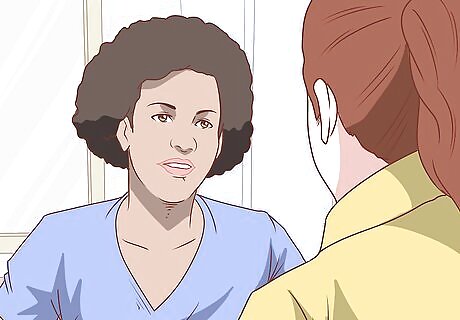
Visit a massage therapist. If your stress balls do not diminish in a day or two, it might be time to seek professional help. Make an appointment with a massage therapist. Many spas, gyms, and yoga studios have massage therapists on staff, so ask the staff at those locations for some information, or get a referral from your doctor. Look for a massage therapist who is certified, licensed, or registered. Before booking your appointment, ask about her training, methods, and costs. The massage therapist will apply pressure to the stressed muscles in order to work out any knots. Make sure to let her know if the pressure is appropriate for your body.
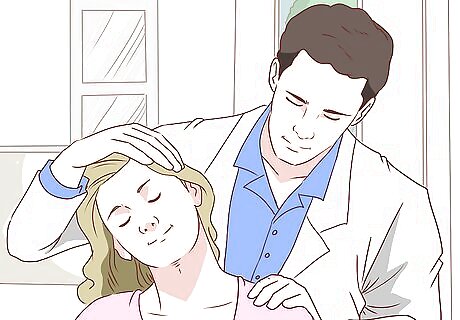
Try physical therapy. Seeing a physical therapist can help to eliminate stress balls and prevent them from recurring. Physical therapy is a great option when any part of your body is under high levels of stress. Physical therapy involves working with your body to create an optimal outcome. Your physical therapist may use a mixture of both active and passive therapy. Active Therapy: This is all about taking action and restoring balance. This may include: stretching, strengthening your muscles through exercise, using pain relief exercises, and doing aerobic conditioning (low-impact of course). Passive Therapy: This therapy does not require you to move your muscles at all. With passive therapy, the therapist may make use of heating pads, ice packs, electrical stimulation, and ultrasounds. Ask your doctor to recommend a reputable, effective physical therapist.

Consider acupuncture. Acupuncture is a type of alternative medicine that uses small needles to puncture the skin at specific pressure points around the body, relieving pressure and pain. This method has long been used in Eastern medicines and is becoming more popular in Western culture. Many people rely on acupuncture to relieve different types of pain. Needles can be scary for some, but your acupuncturist can talk you through the process. The needles are very thin, with a rounded tip. When they're inserted, they do not puncture any blood vessels or nerves, so there should be no bleeding or pain. The needle will create a tiny pinch, followed by pressure, and then you will feel relief. Speak to your doctor to find the name of a licensed acupuncturist in your local area.
Prevent Future Stress Balls
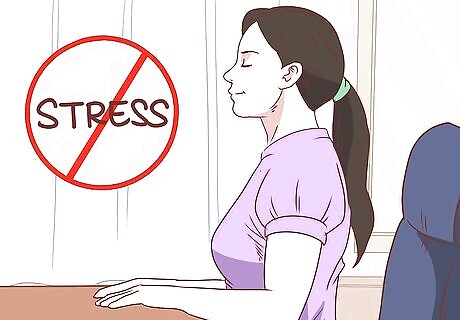
Reduce your physical stress. Try to avoid sitting in one place for an extended period of time. Walk around a little bit, and try doing gentle shoulder rolls. If you sit at a desk all day, make it a point to get up and walk around for a few minutes every hour. Try to avoid hunching your shoulders. Sit up straight, with your head high and shoulders back. Good posture can be very effective in reducing tension in your neck and shoulders. Get a new pillow. If your pillow is too flat, it might not be providing the neck support that you need. If your neck is especially sore when you wake up in the morning, a new pillow might help solve the problem.
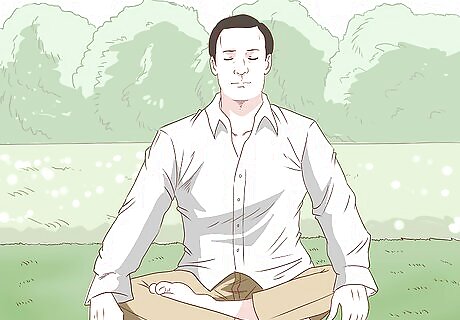
Alleviate mental tension. Emotional stress can manifest itself in your body. Try to reduce anxiety by calming your mind. You can try methods such as meditation, which is a great way to relax. You can also consider adding weekly yoga sessions to your routine. Yoga and meditation will teach you how to perform deep breathing exercises, which are a great way to cope with stress. You can attend meditation and yoga classes, or you can practice them in the comfort of your own home. To meditate, all you need is a quiet, comfortable space where you can close your eyes, focus on your breathing. In terms of the mental stress, if there are aspects of your work that are causing you to experience excessive amounts of stress, implement change by cutting back your hours, or even looking for a new job.

Adopt healthy habits. Your diet and exercise habits can play a big part in how your body and mind function. Try eating healthy and getting more exercise to keep your stress levels low. This can help prevent future muscle issues. Aim to be physically active for at least 30 minutes five days a week. Exercise is great for relieving stress and anxiety, while also promoting optimal health. Try to find a form of exercise that you enjoy doing, as this will make you more likely to keep it up. It could be running, swimming, kickboxing, Zumba or pilates — anything that gets your blood flowing and your heart rate up. Remember that no matter what type of exercise you do, you should always stretch first. Stay hydrated in order to avoid dehydration. The same is true for your muscles - a lack of water will cause them to become tight and stressed. Choose healthy foods. A nutrient-rich diet is important in terms of stress levels. Your body is always trying to create balance within your internal systems. Try to incorporate more B Vitamins into your diet. You can do this by eating foods such as chicken, fish, cereals and leafy green vegetables.

















Comments
0 comment